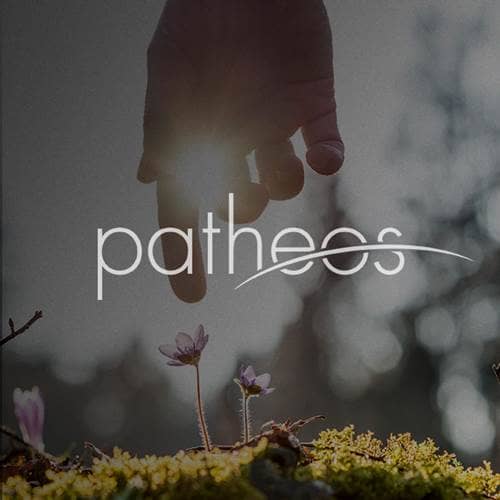- Trending:
- Forgiveness
- |
- Resurrection
- |
- Joy
- |
- Trump
- |
- Kamala Harris
- |
- Supreme Court

RELIGION LIBRARY
Sikhism
Modern Age
Written by: Rahuldeep Singh Gill
Elements of European culture had entered the Punjab during the reign of Maharaja Ranjit Singh (r. 1799-1839). The Maharaja employed French officers who trained soldiers in European fighting methods. By the time of the Maharaja's death in 1839, the British East India Company controlled most of South Asia, and annexed the Punjab only a decade later.
With colonialism came elements of Sikh-British cooperation, and Sikhs joined the British army in high numbers. The British not only accommodated Sikh religious differences but encouraged the initiation by the straight-sword and the Singh identity. Rural Punjab underwent transformation as canal colonies were built to expand agricultural cultivation. Villages, towns, and cities saw a greater degree of connectivity due to technological introductions that streamlined travel and communication across previously insurmountable distances.
Along with roads, canals, printing presses, and telegraphs, another British innovation brought a new degree of self-consciousness to colonial-era Sikhs: the census. Beginning in middle of the 19th century, Sikhs began to acknowledge that though they had enjoyed political power in the first half of the century, their proportional representation in the Punjab was less than 10 percent. Nowhere did they form any kind of majority that would result in political prominence in demographics-based British norms where communitarian numbers mattered.
A wide array of responses to the colonial predicament emerged. One can see, for example, the effect of colonial resistance in the rise of the Namdhari movement. But the emergent voice in the late 19th and early 20th centuries was that of moderate Sikhs belonging to the Singh Sabha reform organizations, centered in the cities of Lahore and Amritsar. The Singh Sabha movement sought to bring the articulation of Sikh beliefs and conduct in consonance with the demands of modernity, just as Indian Hindu and Muslim organizations were mobilizing for those communities. The reform-minded Sikhs utilized the printing press and educational institutions in the name of articulating a clearer, modern Sikh culture. For example, one of the products of this reform was the Khalsa College, founded in 1892 in Amritsar. This esteemed and aesthetically sophisticated place of higher learning became the most important institution in the production of Sikh academic work.
In the early 20th century, modernist Sikhs built on this foundation. In 1915, the Chief Khalsa Diwan, also a reformist organization, published a normative code of ceremonies and rites called Gurmat Prakash: Bhag Sanskar. A decade later, the Gurdwara Reform Act created the Shiromani Gurdwara Prabhandak Committee (SGPC) to wrest control of historical gurdwaras (places of worship) from local patrons and place their maintenance in the hands of an organization that stood for the broader Sikh populace. Twenty-five years after the SGPC's establishment, it published an even more concrete set of codes than the Chief Khalsa Diwan's, known as Sikh Rahit Maryada, in 1950.
Soon after the establishment of a secular India in 1947, the Akali Dal, the main Sikh political party, demanded a state in which Punjabi language and culture were protected. The Indian leadership in Delhi saw this as a thinly veiled guise for Sikh autonomy within Indian federalism. After a decade and half of agitation, the map of Punjab was redrawn in 1966 to create a state where Punjabi was the language of the majority population, and where Sikhs were a majority of the population. However, the conflict between the central Indian government and Sikhs in the Punjab continued for several decades thereafter.
Militancy was a major part of Sikh history of the 1980s and 1990s, as many Sikhs in Punjab and abroad participated in, or supported, a movement toward a separate Sikh state. Sikh separatists acted violently to draw attention to their political demands and the Indian state reciprocated with violence, resulting in thousands of deaths, the exact number of which is contested. The Indian army's brutal 1984 invasion of the most sacred of Sikh spaces, the Darbar Sahib complex, resulted in the deaths of hundreds of Sikhs and great destruction, and in revenge, two Sikh bodyguards assassinated Prime Minister Indira Gandhi. Pogroms throughout India ensued in which Sikhs were targeted; thousands were killed and tens of thousands were displaced.
Although not all Sikhs supported the idea of a Sikh state or the use of violence to achieve it, the Indian army's actions continue to be a deeply painful collective memory for most Sikhs. Today, Sikhs enjoy a more peaceful co-existence within India, as even a Prime Minister of India has been a Sikh (Manmohan Singh). However, the issues surrounding the injustices against Sikhs during the period of violence have not been forgotten.
Today, about 10 percent of the Sikh population, over two million people, lives outside of India, and is influential in several ways. Time will tell what changes these members of the community initiate. Sikhs outside of India today have begun to address issues of Sikh tradition and innovation. There are some people from Sikh backgrounds who renounce their heritage in order to assimilate into their host cultures. Other Sikhs choose to limit their interactions in non-Indian settings to people of their own kind and clique, entrenching themselves in what they may see as a distinctively Sikh way of life. The vast majority of Sikhs, however, would fall somewhere in between these two poles: navigating integration to other cultures while celebrating traditions from their homeland.
Study Questions:
1. What were some of the major changes that emerged in colonial period?
2. How did Sikhs respond to the changes of the 19th century?
3. What were the major events in 20th-century Sikh history and what motivated them?










